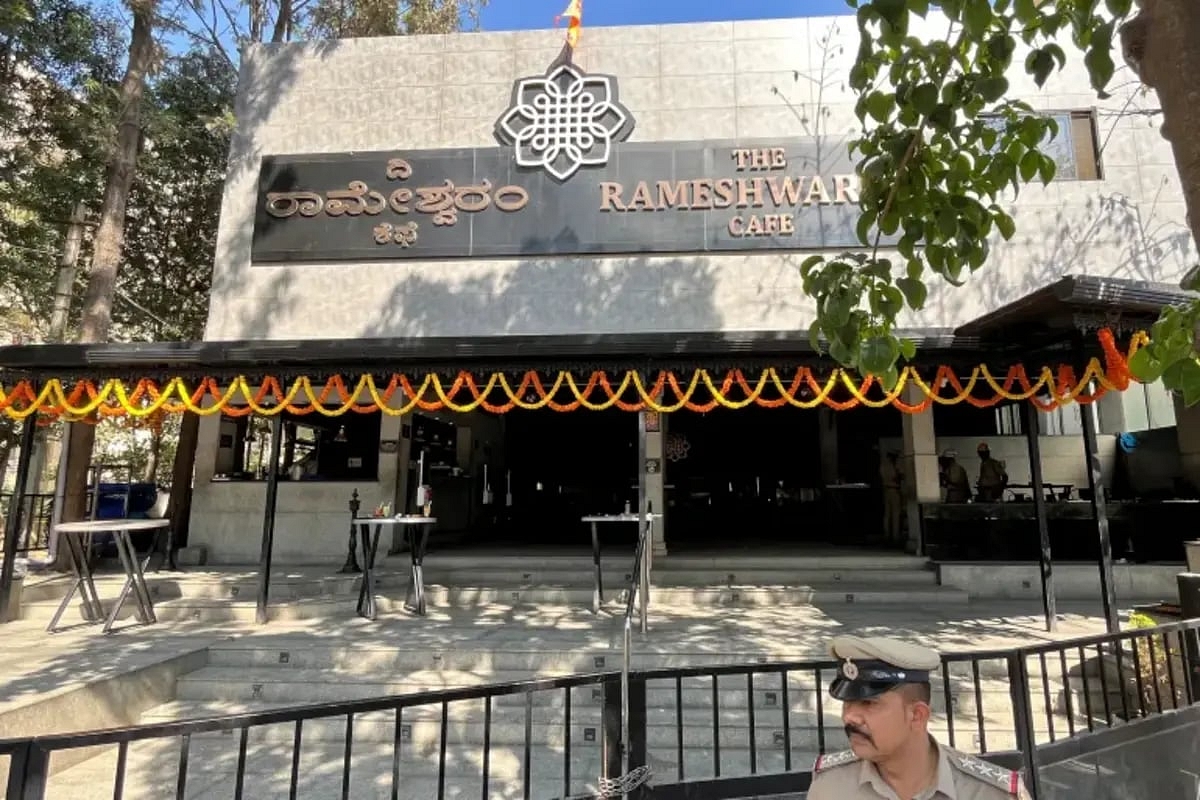News Brief
Cryptocurrency, Fake IDs: Here Are The Key Findings In Bengaluru Cafe Blast Investigation So Far

The Rameshwaram Cafe in Bengaluru was subject to an IED attack on Friday (1 March).
Investigators from multiple agencies have determined that a suspect involved in the Rameshwaram Cafe blast in Bengaluru on 1 March utilised counterfeit identification documents, including a fake Aadhaar ID and driving license, to reside at a lodging facility in Chennai with an accomplice, before the incident.
The discovery of a baseball cap worn by the suspect in CCTV footage during the nine-minute operation of planting an improvised explosive device (IED) at the cafe led investigators from the National Investigation Agency (NIA) and Bengaluru police to Chennai, where the cap was purchased in January.
It has been revealed through investigations that the suspect, likely identified as Musavir Hussain Shazib, a missing terror suspect from the Shivamogga region of Karnataka, stayed in Chennai for over a month before journeying to Bengaluru on the night of 29 February, as per a report by The Indian Express.
According to the same report, the suspect had stayed at a lodging facility in Chennai using fabricated credentials, including a counterfeit Aadhaar card and driving license.
Allegedly, the suspect traveled to Bengaluru via Tirupati to plant an IED on 29 February.
The suspect did not take refuge in Bengaluru but arrived in the morning of 1 March, planted the device at the cafe, and left the same day.
The CCTV footage depicts the suspect traveling on public buses to reach the cafe, wearing a baseball cap, a mask, glasses, a full-sleeved shirt, dark pants, and sports sneakers.
He entered the cafe around 11:35 am and exited by 11:45 am. At 12:56 pm, the IED detonated, injuring nine people.
Subsequent footage shows the suspect boarding public buses and leaving the city after altering his attire, including changing his shirt and discarding the cap approximately 3 km from the cafe at a religious centre.
The suspect was last sighted on CCTV at the Ballari bus stand at 9 pm on 1 March. Following the trail of the abandoned cap, investigators traced its purchase to a clothing retail store in a Chennai mall.
Investigations in Chennai have unveiled that the suspect and his associate, both associated with the Shivamogga IS module, fled the city by the end of the first week of March.
The NIA's investigations into various IS modules, including Shivamogga, Ballari, and Al-Hind, have revealed a network remotely trained by online handlers in terrorism tradecraft.
Support Swarajya's 50 Ground Reports Project & Sponsor A Story
Every general election Swarajya does a 50 ground reports project.
Aimed only at serious readers and those who appreciate the nuances of political undercurrents, the project provides a sense of India's electoral landscape. As you know, these reports are produced after considerable investment of travel, time and effort on the ground.
This time too we've kicked off the project in style and have covered over 30 constituencies already. If you're someone who appreciates such work and have enjoyed our coverage please consider sponsoring a ground report for just Rs 2999 to Rs 19,999 - it goes a long way in helping us produce more quality reportage.
You can also back this project by becoming a subscriber for as little as Rs 999 - so do click on this links and choose a plan that suits you and back us.
Click below to contribute.
Latest